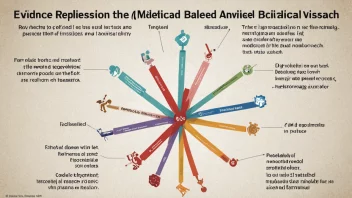Deforestation, the large-scale clearing of forested land, has become a critical concern for global biodiversity and environmental sustainability. The process typically involves cutting down trees to make way for agriculture, urban development, and industrial activities, resulting in the degradation of ecosystems that host a myriad of species. This article delves into the consequences of deforestation on wildlife and habitats, highlighting the urgent need for conservation efforts.
Forests cover approximately 31% of the planet's land area and serve as crucial ecosystems that support around 80% of the world’s terrestrial biodiversity. Many animal species depend on forests for shelter, food, and breeding grounds. When trees are removed, these animals face habitat loss, leading to a decline in their populations. For instance, the Sumatran tiger is critically endangered, largely due to habitat destruction caused by logging and palm oil plantations. The fragmentation of their habitat forces these tigers into smaller areas, increasing competition for resources and reducing genetic diversity, which is vital for their survival.
The impact of deforestation extends beyond immediate wildlife loss; it disrupts the intricate web of life that defines forest ecosystems. Trees play a critical role in carbon sequestration, absorbing carbon dioxide and releasing oxygen. When forests are cleared, not only is this vital function compromised, but the carbon stored in trees is released back into the atmosphere, contributing to climate change. The effects of climate change further threaten biodiversity, as altered weather patterns can make existing habitats inhospitable for many species.
Moreover, deforestation poses challenges to human populations, particularly those that rely on forests for their livelihoods. Indigenous communities often depend on forest resources for food, medicine, and materials necessary for their daily lives. The loss of forests leads to food insecurity and a decline in cultural practices tied to nature. As these communities are forced to adapt to changing environments, the loss of traditional knowledge and practices can have lasting effects on cultural heritage.
The consequences of deforestation are also evident in aquatic ecosystems. Forests play a critical role in regulating water cycles, maintaining water quality, and preventing soil erosion. When trees are removed, the soil becomes more vulnerable to erosion, leading to sedimentation in rivers and streams. This sediment can smother aquatic habitats, disrupt fish populations, and diminish water quality, ultimately affecting both wildlife and human water supplies.
To combat deforestation, numerous initiatives focus on promoting sustainable land-use practices and reforestation. Programs that encourage agroforestry, where trees are integrated into agricultural systems, can help maintain biodiversity while providing economic benefits to local farmers. Additionally, raising public awareness about the importance of forests and advocating for stronger policies to protect these essential ecosystems is critical.
In summary, deforestation significantly impacts wildlife and habitats, leading to biodiversity loss, climate change, and social challenges for human populations. It is vital to recognize the interconnectedness of ecosystems and work collaboratively towards sustainable solutions that protect our forests and their inhabitants. The future of biodiversity and the health of our planet depend on our ability to address and mitigate the consequences of deforestation.
Deforestation's Consequences on Global Biodiversity
Explore the profound consequences of deforestation on global biodiversity and the urgent need for conservation efforts.






